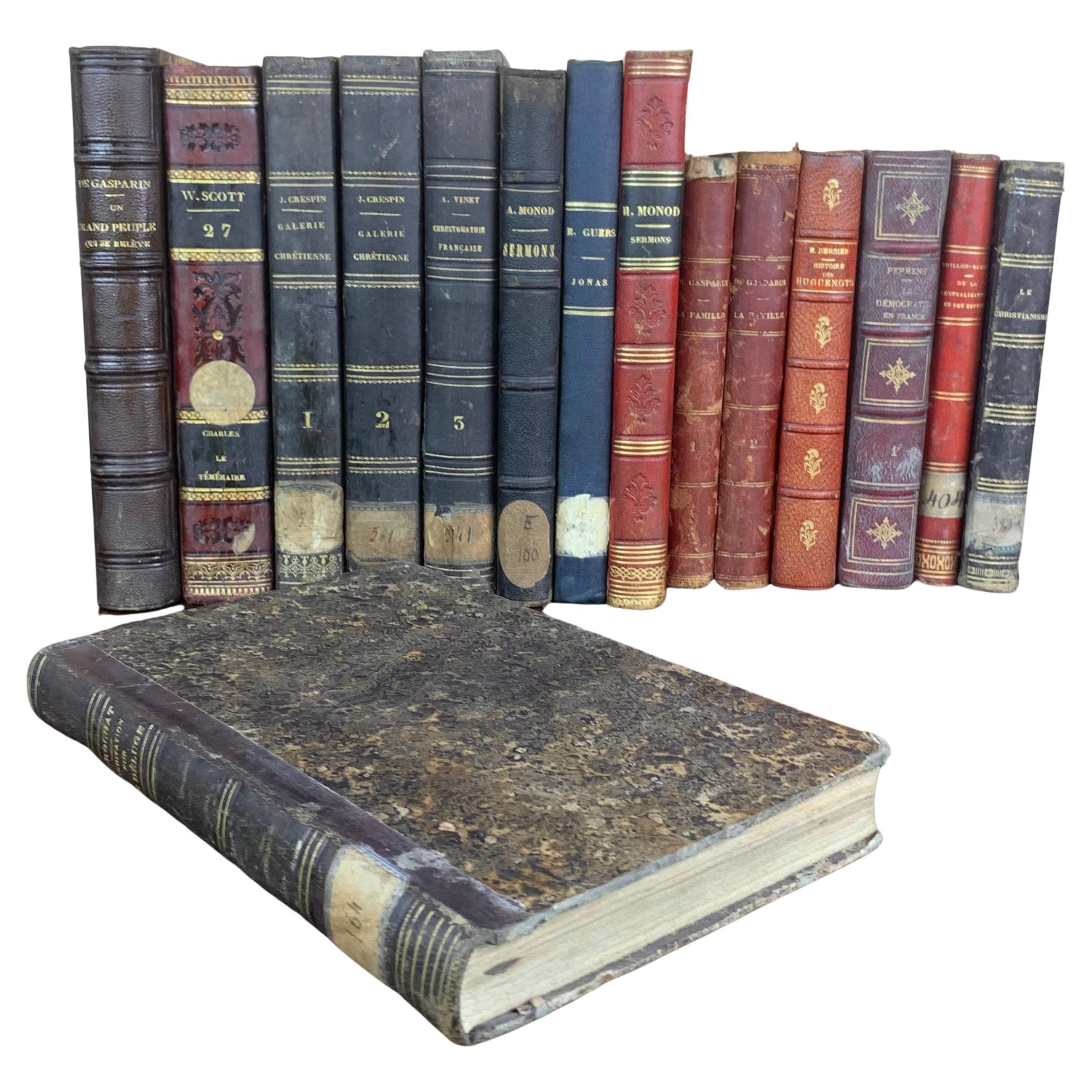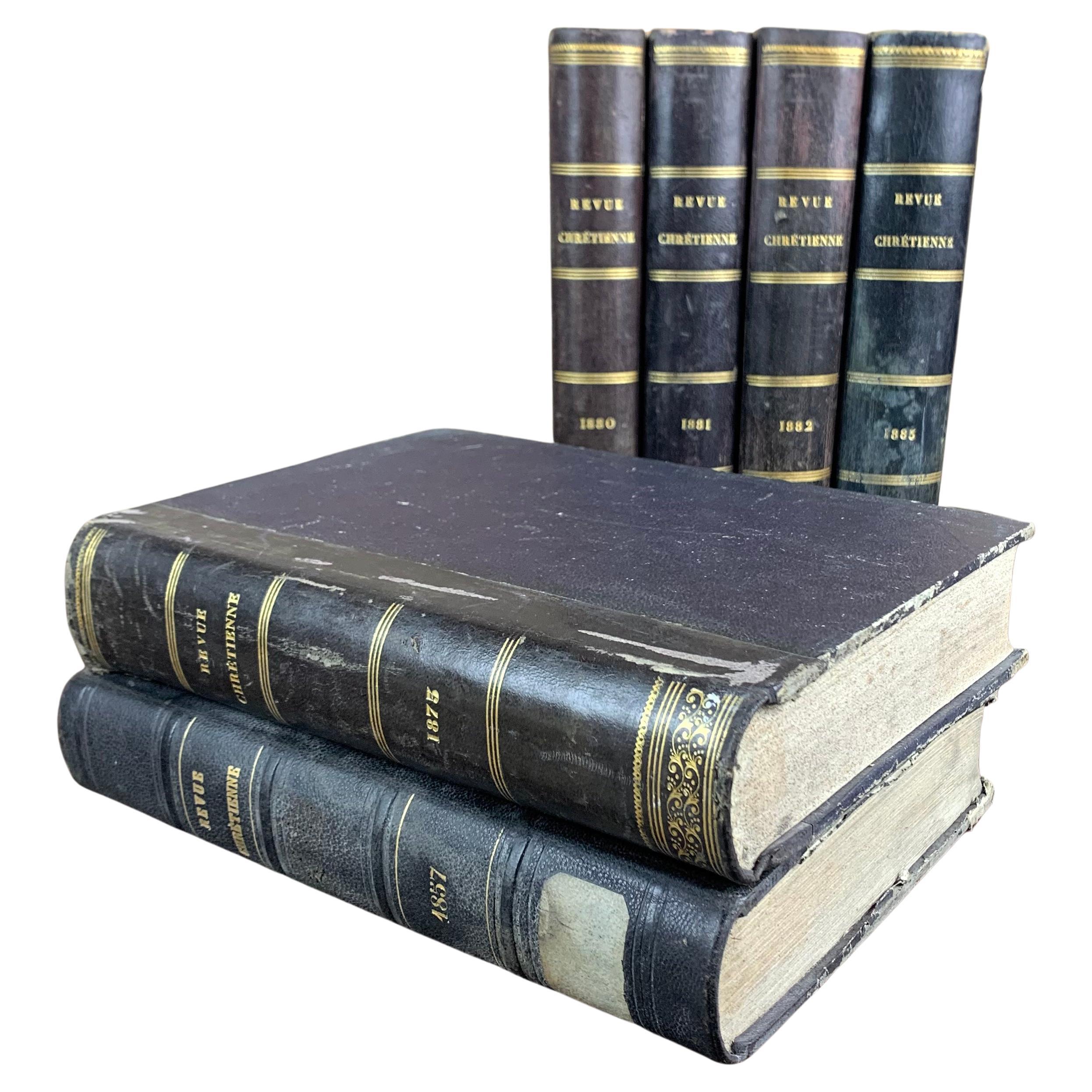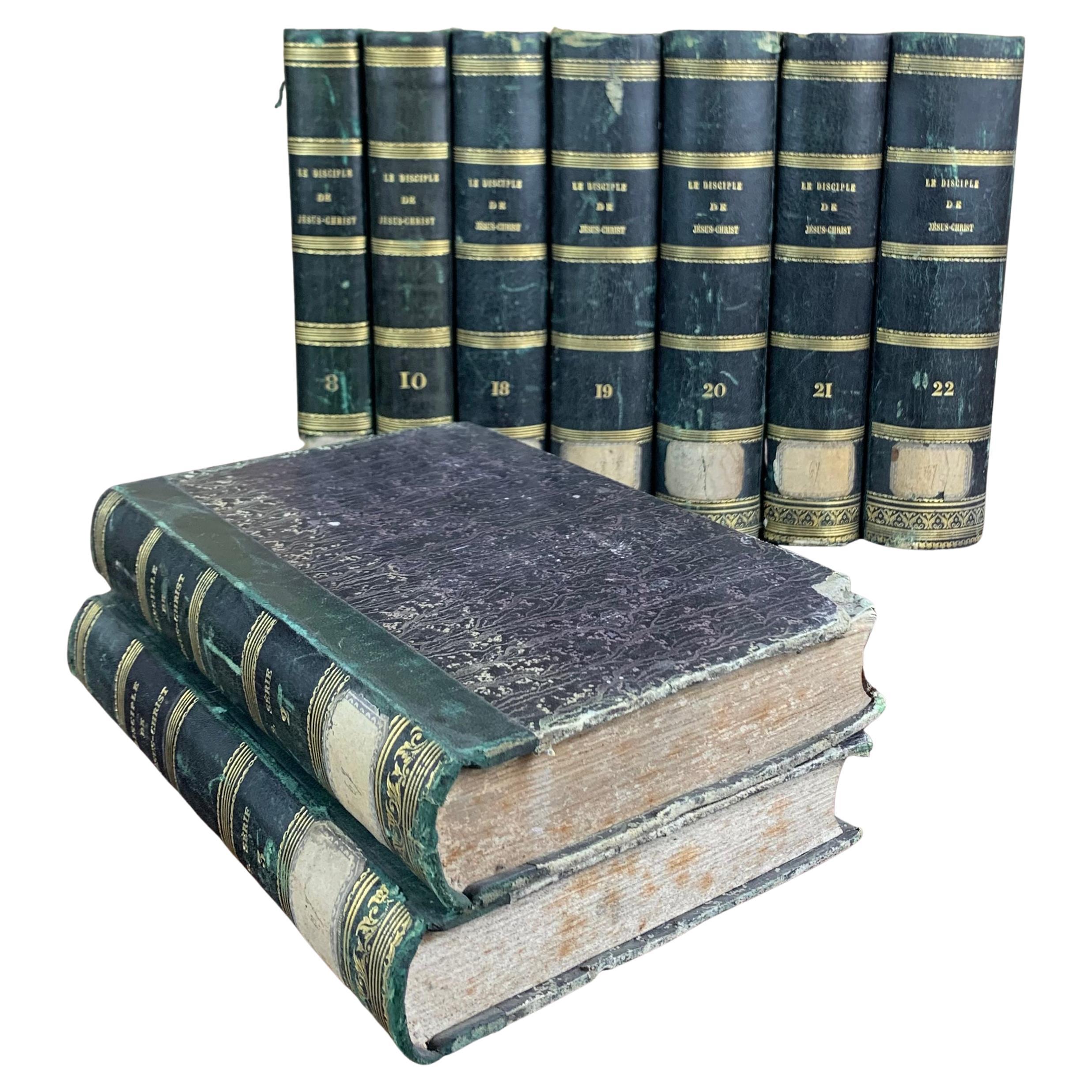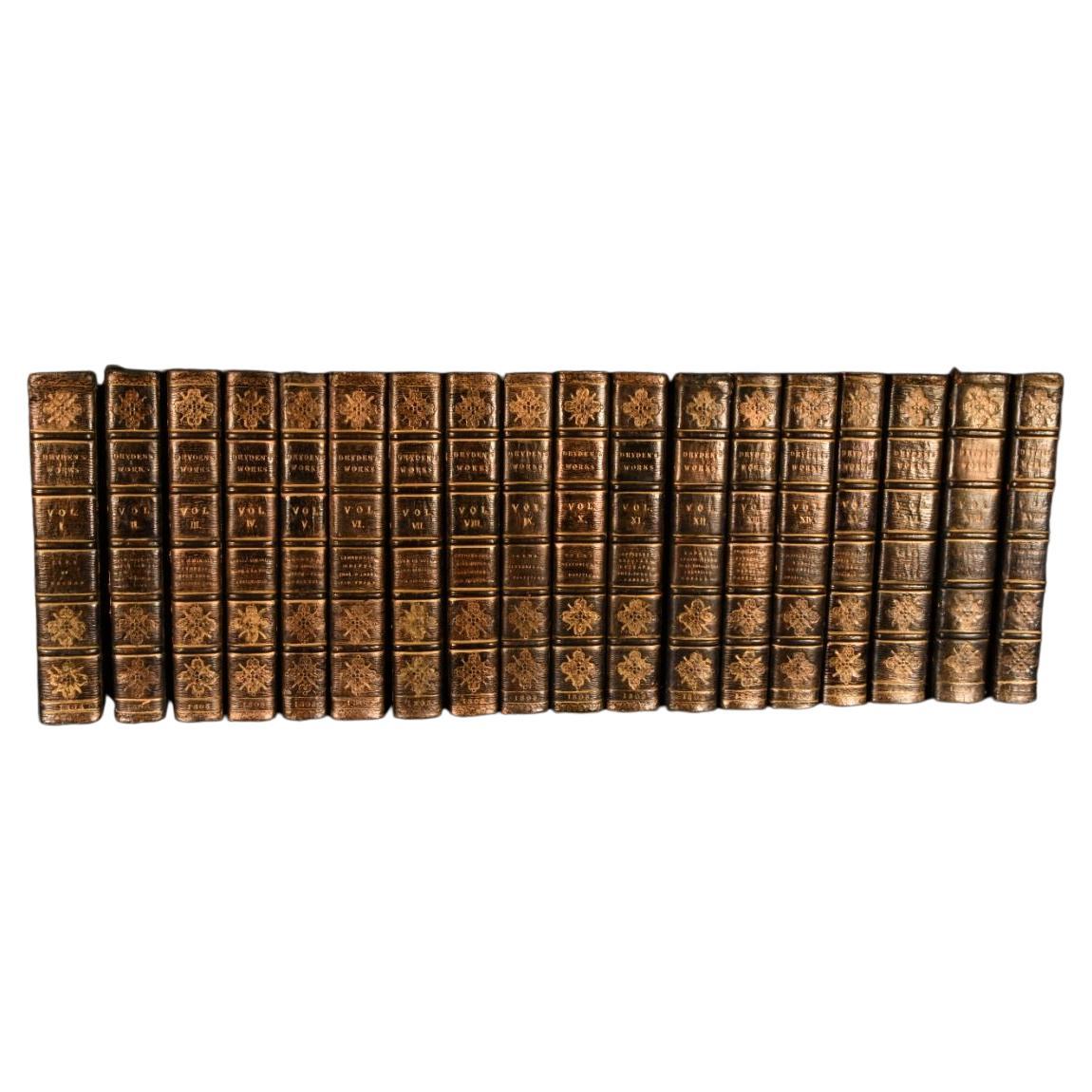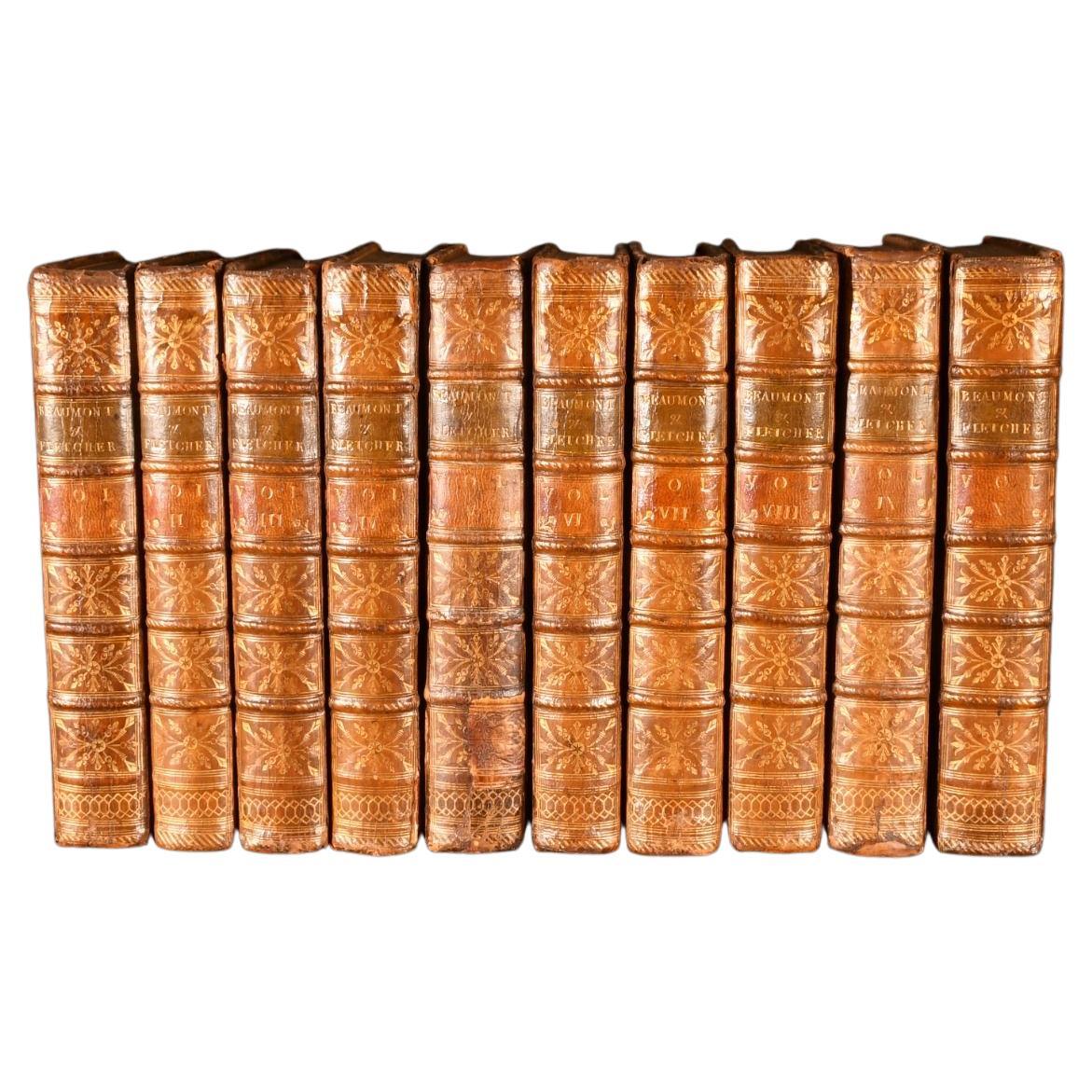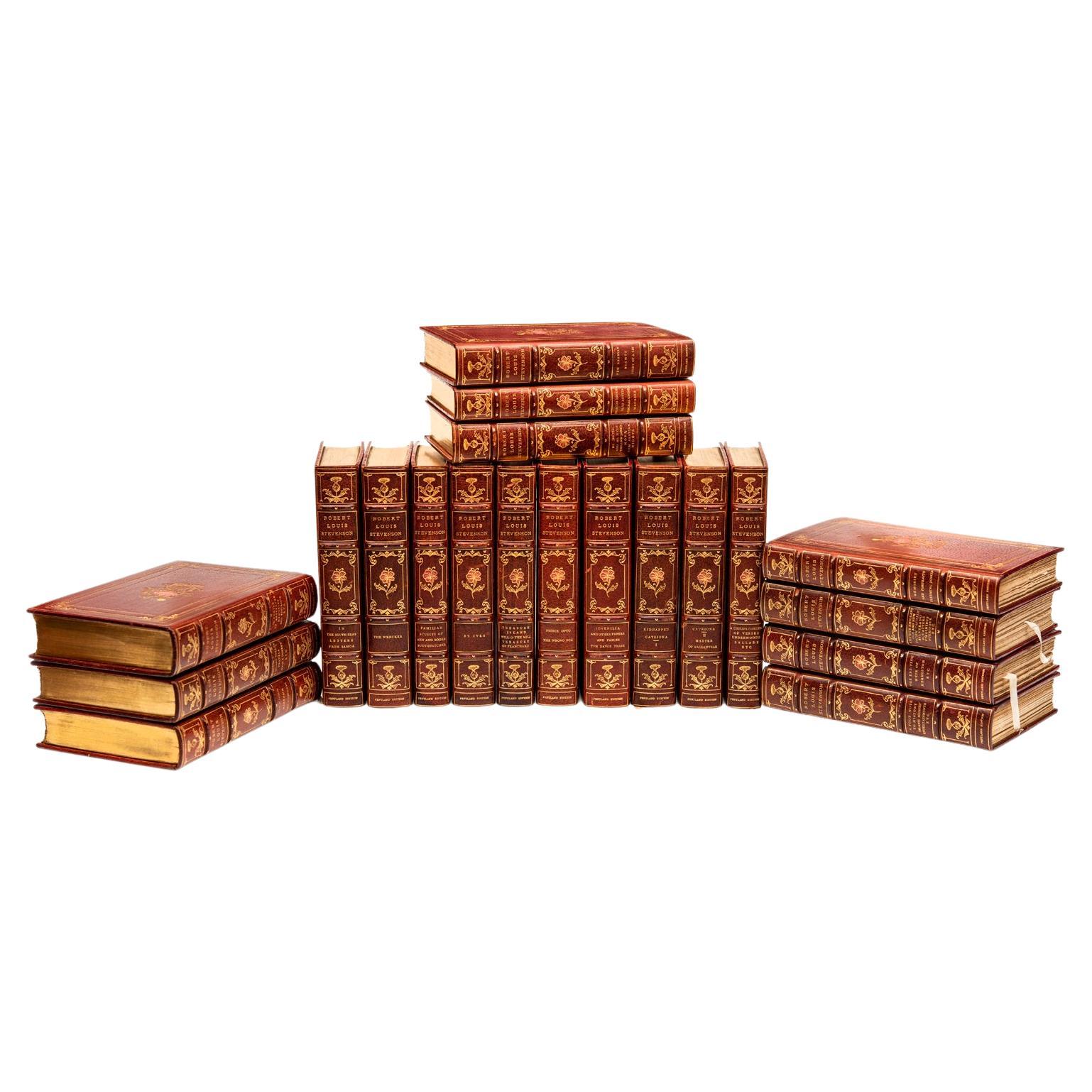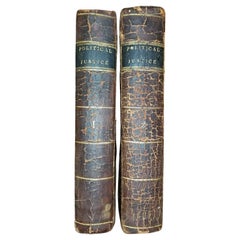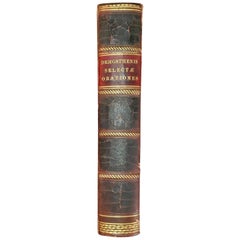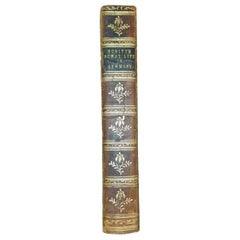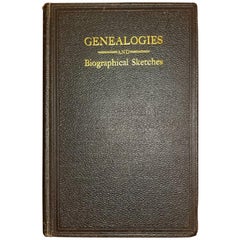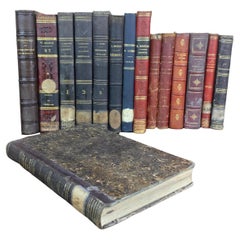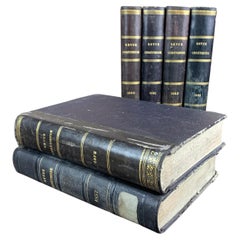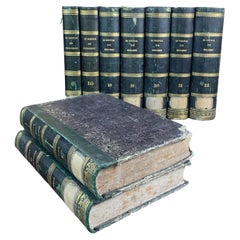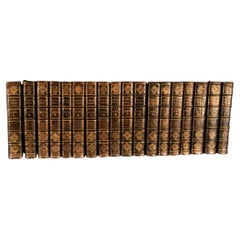Want more images or videos?
Request additional images or videos from the seller
1 of 21
John Bull Original Annuals from 1820-1829
$9,800per set
£7,436.01per set
€8,502.42per set
CA$13,687.94per set
A$15,219.13per set
CHF 7,946.59per set
MX$185,253.87per set
NOK 101,395.03per set
SEK 95,002.29per set
DKK 63,455.11per set
Quantity
Shipping
Retrieving quote...The 1stDibs Promise:
Authenticity Guarantee,
Money-Back Guarantee,
24-Hour Cancellation
About the Item
Presenting a set of 9 volumes, leather bound John Bull yearly annuals.
All the weekly newspaper publications of John Bull for the years 1820-1829 (Inclusive), bound together and sold as ‘Annuals’.
This is such a rare find ….. You will not find these anywhere else …. Truly historic!
It contains the very first edition ever printed!
John Bull is a national personification of the United Kingdom in general and England in particular, especially in political cartoons and similar graphic works. He is usually depicted as a stout, middle-aged, country dwelling, jolly, matter-of-fact man.
John Bull originated in the creation of Dr. John Arbuthnot, a friend of Jonathan Swift (author of Gulliver’s Travels) and satirist Alexander Pope in 1712, and was popularized first by British print makers. Arbuthnot created Bull in his pamphlet Law is a Bottomless Pit (1712). The same year Arbuthnot published a four-part political narrative The History of John Bull. In this satirical treatment of the War of the Spanish Succession a bold, honest and forthright clothier John Bull brings a lawsuit against various figures intended to represent the kings of France and Spain as well as institutions both foreign and domestic.
Originally derided, William Hogarth and other British writers made Bull “a heroic archetype of the freeborn Englishman.” Later, the figure of Bull was disseminated overseas by illustrators and writers such as American cartoonist Thomas Nast and Irish writer George Bernard Shaw, author of John Bull’s Other Island.
Starting in the 1760s, Bull was portrayed as an Anglo-Saxon country dweller. He was almost always depicted in a buff-colored waistcoat and a simple frock coat (in the past Navy blue, but more recently with the Union Jack colors). Britannia, or a lion, is sometimes used as an alternative in some editorial cartoons.
As a literary figure, John Bull is well-intentioned, frustrated, full of common sense, and entirely of native country stock. Unlike Uncle Sam later, he is not a figure of authority but rather a yeoman who prefers his small beer and domestic peace, possessed of neither patriarchal power nor heroic defiance. Arbuthnot provided him with a sister named Peg (Scotland), and a traditional adversary in Louis Baboon (the House of Bourbon in France). Peg continued in pictorial art beyond the 18th century, but the other figures associated with the original tableau dropped away. John Bull himself continued to frequently appear as a national symbol in posters and cartoons as late as World War I.
The original John Bull was a Sunday newspaper established in the City, London EC4, by Theodore Hook in 1820 ……… This collection contains the original of the very first edition!!!!!
It was a popular periodical that continued in production through July 1892.
Provenance: Purchased from a Private English Collector 23 years ago, in Ireland.
Condition: Some loose covers, losses to the bindings, some foxing and some creasing, but overall in relatively good condition …. what do you expect ?? They are 200 years old!!
Dimensions: Each volume is 16? tall, 11.15? wide and 1.2? deep.
- Dimensions:Height: 16 in (40.64 cm)Width: 11.15 in (28.33 cm)Depth: 1.2 in (3.05 cm)
- Sold As:Set of 2
- Style:George III (Of the Period)
- Materials and Techniques:Paper,Engraved
- Place of Origin:
- Period:
- Date of Manufacture:1820-1829
- Condition:Wear consistent with age and use. Minor losses. Minor structural damages. Minor fading. Some loose covers, losses to the bindings, some foxing and some creasing, but overall in relatively good condition for their age. They are 200 years old, after all ! Original Condition.
- Seller Location:Dallas, TX
- Reference Number:1stDibs: LU3978119250182
About the Seller
4.9
Vetted Professional Seller
Every seller passes strict standards for authenticity and reliability
Established in 2015
1stDibs seller since 2018
390 sales on 1stDibs
Typical response time: 1 hour
- ShippingRetrieving quote...Shipping from: Dallas, TX
- Return Policy
Authenticity Guarantee
In the unlikely event there’s an issue with an item’s authenticity, contact us within 1 year for a full refund. DetailsMoney-Back Guarantee
If your item is not as described, is damaged in transit, or does not arrive, contact us within 7 days for a full refund. Details24-Hour Cancellation
You have a 24-hour grace period in which to reconsider your purchase, with no questions asked.Vetted Professional Sellers
Our world-class sellers must adhere to strict standards for service and quality, maintaining the integrity of our listings.Price-Match Guarantee
If you find that a seller listed the same item for a lower price elsewhere, we’ll match it.Trusted Global Delivery
Our best-in-class carrier network provides specialized shipping options worldwide, including custom delivery.More From This Seller
View All1st US Edition of ‘Enquiry Concerning Political Justice’ by W Godwin 1796
Located in Dallas, TX
PRESENTING AN EXTREMELY RARE FIRST US EDITION hardback copy of “Enquiry Concerning Political Justice and Its Influence on Morals and Happiness by William Godwin, First American from ...
Category
Antique Late 18th Century American George III Books
Materials
Leather, Paper
Demosthenis Selectae Orationes by Richard Mounteney 1791 7th Edition
Located in Dallas, TX
Presenting a fabulously rare antiquarian book from 1791, namely, Demosthenis Selectae Orationes by Richard Mounteney 1791 7th Edition.
Leather Spine in very good condition. Leathe...
Category
Antique 18th Century English Classical Greek Books
Materials
Leather, Paper
1st Edition of ‘Rural & Domestic Life of Germany’ by W Howitt -1842
By William Howitt
Located in Dallas, TX
PRESENTING AN EXTREMELY RARE FIRST EDITION hardback copy of ‘The Rural and Domestic Life of Germany with Characteristic Sketches of its Cities and Scenery, Collected in a General To...
Category
Antique Mid-19th Century English Country Books
Materials
Paper
Genealogies and Sketches of Some Old Families of VA and KY by BF Van Meter 1901
Located in Dallas, TX
Presenting an extremely rare first edition hardback copy of Genealogies and Sketches of Some Old Families Who have taken Prominent Part in the Development o...
Category
Early 20th Century American American Colonial Books
Materials
Paper
19C English Naval Captain's Sea Chest
Located in Dallas, TX
PRESENTING a GORGEOUS 19C English Naval Captain’s Sea Chest.
Made in Britain, probably England, circa 1851-55.
Early Victorian Era.
Made of...
Category
Antique Mid-19th Century English Early Victorian Blanket Chests
Materials
Oak
Early 19th Century British Davenport Desk in the Manner of Gillows
Located in Dallas, TX
PRESENTING AN ABSOLUTELY STUNNING Early 19C British Rosewood Davenport Desk in the Manner of Gillows circa 1830.
A Davenport is a type of writ...
Category
Antique Early 19th Century English William IV Desks and Writing Tables
Materials
Hardwood
You May Also Like
Set of Old Bound Books from 19th Century
Located in Beuzevillette, FR
Set of old books dating from the 19th century. From an old protestant library near Le Havre in France. These beautiful books are perfect to fill a nic...
Category
Antique 19th Century French Books
Materials
Leather, Paper
Set of Old Bound Books from 19th Century
Located in Beuzevillette, FR
Set of old books dating from the 19th century. From an old protestant library near Le Havre in France. These books are called «Revue Chrétienne» (Chr...
Category
Antique 19th Century French Books
Materials
Leather, Paper
Set of Old Bound Books 19th Century
Located in Beuzevillette, FR
Set of old books dating from the 19th century. From an old protestant library near Le Havre in France. These books are called « Disciple de Jésus Christ » (disciple of Jesus Christ)...
Category
Antique 19th Century French Books
Materials
Leather, Paper
1808 The Works of John Dryden
By John Dryden
Located in Bath, GB
A complete, eighteen-volume set of the collected works of John Dryden, the first Scott edition, uniformly bound in straight-grain morocco.
The collected works of John Dryden, with n...
Category
Antique Early 1800s British Books
Materials
Paper
1750 The Works of Mr. Francis Beaumont, and Mr. John Fletcher
By Francis Beaumont
Located in Bath, GB
A handsomely bound ten volume first complete collected edition of the works of these two celebrated Renaissance dramatists.
he first complete edition of the works of these two drama...
Category
Antique 1750s British Books
Materials
Paper
20 Vols. R.L.Stevenson. The Works
Located in New York, NY
20 Volumes.Robert L. Stevenson. The Works.
"Pentland Edition" With Bibliographical notes by Edmund Gosse. Bound in full red morocco, marbled endpapers, top edges gilt, raised bands, ...
Category
Early 20th Century English Books
Materials
Leather
$10,500 / set
More Ways To Browse
Blue John Antique
19th Century Cartoons
Antique Native American Collectibles
British Union Jack
Leather Bull
Leather Coat Hooks
Theodore Alexander Leather
Antique Pamphlets
18th Century Waistcoat
18th Century Scottish Collectibles
Antique Frock Coat
Antique Union Jack
Leather Books Spanish
Antique House Jack
Bound Newspaper
French Political Poster
Sam English
Antique Uncle Sam
